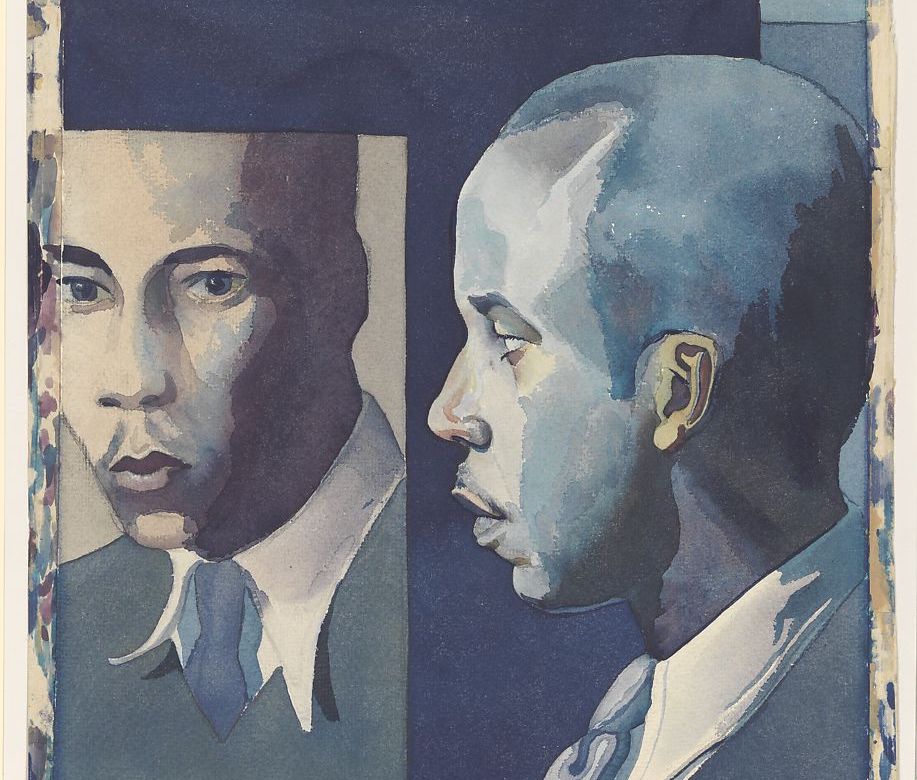The first time one of my closest friends—let’s call her LL— visited my house in the small northwest Philadelphia neighborhood where I lived then with my family, she came in the door, gave me a hug, and said: “Sorry I’m an hour late, the Waze directions were bad, and I think maybe you should go out and repark my car for me.” We’d only known each other a couple months at the time, but I’d read her work and loved it for years, and I was just a little cowed by what I perceived to be her genius, and above that, I learned quickly, she is just good. A good person, a kind person, and a talent. So I demurred: “I’m sure it’s fine!” I said, a little too confidently. Ours was an impossibly narrow and steep block, so tight you risked hitting the cars across the street with your driver’s side fender when parking on the right-hand curb. I told her one more time it would be fine. We sat down and had a drink, and then another, and then my wife came home and said, “Oh, my god, you should see this parking job someone did down the street.” LL looked sheepish. I handed my wife my drink and went outside and halfway down our block was LL’s car, at an eighty-degree angle to the curb. In front of a fire hydrant.
Which is all to say that this friend of mine was and is a genius, and while in her stories and novels characters might travel across lands near and far, swim below the waves with nearby fishes but avoiding nearby sharks, in the real world her spatial reasoning is… not good. “A lady who writes, and whom I admire very much,” Flannery O’Connor once told a group of students she was visiting, “wrote me that she had learned from Flaubert that it takes at least three activated sensuous strokes to make an object real; and she believes that this is connected with our having five senses. If you’re deprived of any of them, you’re in a bad way, but if you’re deprived of more than two at once, you almost aren’t present.” Joseph Conrad in one of his famous prefaces is more specific still: “My job as a writer of fiction is to make you see, to appeal as accurately as possible to the visible, and that is everything.” I do not think he meant “see” metaphorically, given the way Conrad qualifies this claim in the rest of his preface. I think he literally means to privilege the visual in writing. But if we are going to appeal to any of the senses, we need to know what they are, and I find myself often in front of students saying that there are not five senses, as we learned as children, but more like six (and maybe even a seventh). The sixth of these senses is proprioception: our sense of where our physical body is in proximity to the spacial world around us. And just as blind old Milton or blind old Henry James or blind old Goethe or blind old Homer or James Joyce, blind from syphilis, could dictate their work and evoke images of all kinds long after their sight was gone, even the ostentatiously bad parallel parker employs that sense of proprioception in her work.
Proprioception, the sense of where we are in space, can do more than simply bring character into focus—it also grants a kind of topicality when employed effectively. In the opening scene of Jesmyn Ward’s National Book Award-winning Salvage the Bones, though our main characters don’t know yet the havoc it will wreak, Hurricane Katrina is bearing down on the Mississippi Gulf Coast, where they languidly prep for the storm. The novel’s 15-year-old narrator, Esch, watches as her brother Skeetah works to help his pit bull, China, whelp a litter of pups. Ward is an unparalleled sentence-level writer, and the turns of phrase in these opening pages tune up our senses: Esch sees her father “through the window of the shed, his face shining like the flash of fish under water when the sun hit.” China’s whelping evokes in Esch the memory of her younger brother Junior’s birth when he “came out purple and blue as a hydrangea: Mama’s last flower.” The similes do immense work to bring memory—to bring the past—onto the page through visual imagery. But Ward is also masterful with her sense of place, and where Esch is in the world. This begins narrowly, as she tracks Esch’s relation to China and her puppies. Skeetah shakes her quickly from her reverie about Junior’s birth, saying, “Get out the doorway.”
By the next chapter we’ll learn Esch is pregnant, and before we even know, we’re keenly attuned to the distance Esch is keeping from this dog as she litters. Paragraphs after seeing her in the doorway, we see that her other brother Randall “is standing at the side of the open doorway.” Esch is next to him, and she tells us she “walked out of the back door to the shed, stood where I am standing now, to check on” China and Skeetah. All this close attention to Esch’s physical location in the action serves to bring across the dynamics with her large group of siblings—and to set us in scene, to bring a sense of place to the fore. Proprioception here has a lot broader work to do as well. We quickly learn that “it’s summer, and when it’s summer, there’s always a hurricane coming or leaving here.” It’s a neat little piece of dramatic irony Ward is playing with here—the reader knows upon opening the book that Katrina will hit soon enough, and while Esch can’t know what’s about to come, she’s thinking about herself in relation to the dog, to her brothers, and to the storm. “The longer you look at one object,” Flannery O’Connor writes, “the more of the world you see in it; and it’s too well to remember that the serious fiction writer always writes about the whole world, no matter how limited his particular scene. For him, the bomb that was dropped on Hiroshima affects life on the Oconee River, and there’s nothing he can do about it.” The bomb Hurricane Katrina is about to drop on the Gulf Coast is not limited—it is about to be Esch’s whole world, inside and out and beyond.
Ward is also a writer attuned to that potential seventh sense I mentioned above: enteroception, our sense of what’s happening inside us, physically, in our guts. In the opening chapters of Salvage the Bones—a book whose very title casts our gaze to our insides—Ward moves us slowly and deliberately into Esch’s body with her. In her memory of her mother giving birth to her brother, Esch says, “I can see her, chin to chest, straining to push Junior out, and Junior snagging on her insides, grabbing hold of what he caught on to try to stay inside her.” This isn’t yet enteroception proper—it’s Esch’s move to a space of empathy for the way her now-dead mother felt. But a page later, she sees Manny, whom she loves, and we’re right inside with her: “Seeing him,” Esch says, “broke the cocoon of my rib cage, and my heart unfurled to fly.” When Esch’s father feels the storm coming he says that it “[m]akes [his] bones hurt.” Later in the opening scene when Esch cuts her hand on a broken glass that literally enters her body, her brother Randall helps her stanch the bleeding. “You got to push… until it stops hurting,” Esch remembers him saying, evoking the labors of China and her mother. “My stomach tilted,” she continues. In that last line we’re all the way to Esch’s interior with her. From babies in bellies, to glass in hands, to Esch in a room with a whelping pit bull, to the oncoming catastrophe of the hurricane, Ward is at all times focused on her character’s place in the world—their literal location in space as well as the space inside them.
 That evocation of where a character or narrator is in spatial relationship to the world can account for a massive widening or narrowing of meaning as we move through a narrative. Since I mention Joyce, it strikes me that one of the most effective uses of a character in space comes in his long story “The Dead.” The story’s setting sits in tight confines from its start: Gabriel Conroy has returned from his cosmopolitan life as a book critic in London to his aunts’ house in Dublin for Christmas. Over the course of nearly 60 pages, we see him arrive; dance; carve a turkey; and then return to a hotel room with his wife, Gretta, where she makes a deep confession from her youth that affects him greatly. We’re near to Gabriel’s point of view throughout the story, the third-person narration focusing more and more tightly on his thoughts as the story progresses. While it is not Gabriel who thinks “Lily, the caretaker’s daughter, was literally run off her feet” in the opening line—he hasn’t arrived at the party yet, and he of all character wouldn’t say “literally” when what he meant was “figuratively”—soon after he arrives the point of view has shift into his head, and we’re hearing him think thoughts about “thought-tormented music.” The great effect of the snows outside Gabriel’s aunts’ home on that Christmas Eve comes in the careful way Joyce tracks the snow in physical relationship to his main character. When Gabriel first arrives at the party, we hear how “the buttons of his overcoat slipped with a squeaking noise through the snow-stiffened frieze, a cold fragrant air from out of doors escaped from crevices and folds.” Note how Joyce brings smell, sound, sight, and touch all at once—and how literally near to hand the snow is. Midway through the story, we note that “Gabriel’s warm trembling fingers rapped the cold pane of the window. How cool it must be outside! How pleasant it would be to walk out alone…. The snow would be lying on the branches of the trees and forming a bright cap on the top of the Wellington monument.” Gabriel’s thoughts move him, and Joyce’s reader, away and out of the narrow confines of scene, and his sense of the nearby (windowpane) is granted depth and breadth by moving to thoughts of snow hundreds of yards distant.
That evocation of where a character or narrator is in spatial relationship to the world can account for a massive widening or narrowing of meaning as we move through a narrative. Since I mention Joyce, it strikes me that one of the most effective uses of a character in space comes in his long story “The Dead.” The story’s setting sits in tight confines from its start: Gabriel Conroy has returned from his cosmopolitan life as a book critic in London to his aunts’ house in Dublin for Christmas. Over the course of nearly 60 pages, we see him arrive; dance; carve a turkey; and then return to a hotel room with his wife, Gretta, where she makes a deep confession from her youth that affects him greatly. We’re near to Gabriel’s point of view throughout the story, the third-person narration focusing more and more tightly on his thoughts as the story progresses. While it is not Gabriel who thinks “Lily, the caretaker’s daughter, was literally run off her feet” in the opening line—he hasn’t arrived at the party yet, and he of all character wouldn’t say “literally” when what he meant was “figuratively”—soon after he arrives the point of view has shift into his head, and we’re hearing him think thoughts about “thought-tormented music.” The great effect of the snows outside Gabriel’s aunts’ home on that Christmas Eve comes in the careful way Joyce tracks the snow in physical relationship to his main character. When Gabriel first arrives at the party, we hear how “the buttons of his overcoat slipped with a squeaking noise through the snow-stiffened frieze, a cold fragrant air from out of doors escaped from crevices and folds.” Note how Joyce brings smell, sound, sight, and touch all at once—and how literally near to hand the snow is. Midway through the story, we note that “Gabriel’s warm trembling fingers rapped the cold pane of the window. How cool it must be outside! How pleasant it would be to walk out alone…. The snow would be lying on the branches of the trees and forming a bright cap on the top of the Wellington monument.” Gabriel’s thoughts move him, and Joyce’s reader, away and out of the narrow confines of scene, and his sense of the nearby (windowpane) is granted depth and breadth by moving to thoughts of snow hundreds of yards distant.
By the story’s famous ending, the sense of space grows far wider as Gabriel thinks: “Yes, the newspapers were right: snow was general all over Ireland. It was falling on every part of the dark central plain, on the treeless hills, falling softly on the Bog of Allen and, farther west, falling into the dark mutinous Shannon waves.” Joyce uses that sense of proprioception in Gabriel to gain access not only into the visual images of snow outside, but by giving us that sense of how from Dublin all the way west to the Aran Isles snow is falling. The metaphor of an Ireland united by language, as Molly Ivors would prefer, and by political inclination as Gabriel would prefer, is hammered home hard by the sixth sense Gabriel that experiences.
*
 Deep into the third and longest section of his masterpiece The Emigrants, the German writer W.G. Sebald tackles the sense by which proprioception can push almost into a supernatural realm. The Emigrants is a novel comprised of four sections, loosely connected by the fact that all four are the stories of Europeans displaced from their homes by Nazi aggression in World War II, and all of which have a kind of ghostly element in their midst. In the “Ambros Adelwarth” section, we meet the narrator’s uncle, the section’s eponymous main character, who worked as a kind of personal assistant to a wealthy New York scion named Cosmo Solomon. We follow the two characters across the globe at the onset of World War I, as each of their mental health begins to deteriorate, ending in the suicide of Cosmo Solomon.
Deep into the third and longest section of his masterpiece The Emigrants, the German writer W.G. Sebald tackles the sense by which proprioception can push almost into a supernatural realm. The Emigrants is a novel comprised of four sections, loosely connected by the fact that all four are the stories of Europeans displaced from their homes by Nazi aggression in World War II, and all of which have a kind of ghostly element in their midst. In the “Ambros Adelwarth” section, we meet the narrator’s uncle, the section’s eponymous main character, who worked as a kind of personal assistant to a wealthy New York scion named Cosmo Solomon. We follow the two characters across the globe at the onset of World War I, as each of their mental health begins to deteriorate, ending in the suicide of Cosmo Solomon.
Somewhere in the middle of Cosmo’s story, Ambros uses a broad sense of Cosmo’s place in the world to describe the depression that overcomes him. Cosmo is debilitated by depression back in New York as word of war arrives from Europe. “In those days Cosmo would often be steeped in melancholy all day,” he writes:
And then at night [he] would pace to and fro in the unheated summer villa, groaning softly. Wildly agitated, he would string out words that bore some relation to the fighting, and as he uttered those words of war he would apparently beat his forehead with his hand, as if he were vexed at his own incomprehension or were trying to learn what he said by heart. Frequently he would be so beside himself he no longer even recognized Ambros. And yet he claimed he could see clearly, in his own head, what was happening in Europe: the inferno, the dying, the rotting bodies lying in the sun in open fields. Once he eve took to cudgelling the rats he saw running through the trenches.
The ghostly appearance of Cosmo’s deteriorating mental health comes in the form of the very idea O’Connor presents in thinking through the proximity of Hiroshima to the novelist’s world. In Sebald’s storytelling, as in Jesmyn Ward’s, proprioception stretches our senses beyond the boundaries of our immediate surroundings. In the case of Ward’s Esch, the impending hurricane will eventually make landfall in the Pit. In the case of Sebald’s Cosmo Solomon, the horrors of war will land almost as if they are quantum particles on his character’s psyche, irradiating it from inside his own realm of perception.
 Part of the genius of Sebald’s project more broadly comes from his disturbing our notion of how narration itself functions, and in conflating how sense perception finds its way to the storyteller himself. In each section of The Emigrants we begin with a first-person narrator, a stand-in for Sebald himself. But in each section we’re a narrator—or in the case of “Ambros Adelwarth,” three (!!!) narrators—deep. By design, in Sebald’s narration it grows hard to track who is even telling the story itself, moving at times into the second and the third person. This is an active playfulness with a kind of 19th century narrative Sebald wants to mess with. It’s worth nothing that the very sense of proprioception, while it belongs to character as we move into modernism and beyond, often belonged to the implied narrator of 19th century novels. As the initial narrator of Sebald’s novels does, Dostoyevsky might speak in the opening of any of his novels in a first-person narration—a first person who is understood to be the author—and then slide quickly and more or less permanently into the third. Take as an example the opening of Demons: “In setting out to describe the recent and very strange events that took place in our town,” he writes, “I am forced, for want to skill to being somewhat far back—namely, with some biographical details concerning the talented and much esteemed Stepan Trofimovich Verkhovensky.” By the middle of the next paragraph, we are fully in the third person.
Part of the genius of Sebald’s project more broadly comes from his disturbing our notion of how narration itself functions, and in conflating how sense perception finds its way to the storyteller himself. In each section of The Emigrants we begin with a first-person narrator, a stand-in for Sebald himself. But in each section we’re a narrator—or in the case of “Ambros Adelwarth,” three (!!!) narrators—deep. By design, in Sebald’s narration it grows hard to track who is even telling the story itself, moving at times into the second and the third person. This is an active playfulness with a kind of 19th century narrative Sebald wants to mess with. It’s worth nothing that the very sense of proprioception, while it belongs to character as we move into modernism and beyond, often belonged to the implied narrator of 19th century novels. As the initial narrator of Sebald’s novels does, Dostoyevsky might speak in the opening of any of his novels in a first-person narration—a first person who is understood to be the author—and then slide quickly and more or less permanently into the third. Take as an example the opening of Demons: “In setting out to describe the recent and very strange events that took place in our town,” he writes, “I am forced, for want to skill to being somewhat far back—namely, with some biographical details concerning the talented and much esteemed Stepan Trofimovich Verkhovensky.” By the middle of the next paragraph, we are fully in the third person.
 Dickens speaks in his own voice of narration, and moving beyond it uses this mode to great effect in the opening of Bleak House:
Dickens speaks in his own voice of narration, and moving beyond it uses this mode to great effect in the opening of Bleak House:
Fog everywhere. Fog up the river, where it flows among green aits and meadows; fog down the river, where it rolls defiled among the tiers of shipping and the waterside pollutions of a great (and dirty) city. Fog on the Essex marshes, fog on the Kentish heights. Fog creeping into the cabooses of collier-brigs; fog lying out on the yards, and hovering in the rigging of great ships; fog drooping on the gunwales of barges and small boats. Fog in the eyes and throats of ancient Greenwich pensioners, wheezing by the firesides of their wards; fog in the stem and bowl of the afternoon pipe of the wrathful skipper, down in his close cabin; fog cruelly pinching the toes and fingers of his shivering little prentice boy on deck. Chance people on the bridges peeping over the parapets into a nether sky of fog, with fog all round them, as if they were up in a balloon, and hanging in the misty clouds.
 We see this panoramic view of London, but it’s all triangulated by its distance from that “I” narrator, the stand-in for Dickens, at once expansive and tethered in space. In a novel that will be overwhelmed by the minutiae of hundreds of pages of courtroom sophistry and rhetorical flourish, we start by noting the way the visual is obscured by “fog everywhere,” but jumping from “the rigging of great ships” to “people on the bridges” and over four pages, all around London. Joan Didion claimed that her favorite novel was Conrad’s Victory, in which we learn of a scandal that’s taken place on a distant island, but we learn of it as third-hand news. In some ways proprioception can be a matter of access, of how a story can be narrated at all. Think of the lengths Fitzgerald goes to figure out who will be in which car with whom on the way to and from the Plaza in Manhattan from West Egg, leading to Myrtle’s death. The proximity of that car to her body, the proximity of Daisy’s body to the steering wheel, sets in motion Gatsby’s murder itself.
We see this panoramic view of London, but it’s all triangulated by its distance from that “I” narrator, the stand-in for Dickens, at once expansive and tethered in space. In a novel that will be overwhelmed by the minutiae of hundreds of pages of courtroom sophistry and rhetorical flourish, we start by noting the way the visual is obscured by “fog everywhere,” but jumping from “the rigging of great ships” to “people on the bridges” and over four pages, all around London. Joan Didion claimed that her favorite novel was Conrad’s Victory, in which we learn of a scandal that’s taken place on a distant island, but we learn of it as third-hand news. In some ways proprioception can be a matter of access, of how a story can be narrated at all. Think of the lengths Fitzgerald goes to figure out who will be in which car with whom on the way to and from the Plaza in Manhattan from West Egg, leading to Myrtle’s death. The proximity of that car to her body, the proximity of Daisy’s body to the steering wheel, sets in motion Gatsby’s murder itself.
*
 If there’s a concomitant to the way in which proprioception functions for our characters, it’s that seventh sense Ward is so adept at evoking: enteroception, our sense of our internal organs, the insides of our bodies. One of the great innovations of Ulysses was that Joyce freed up all the writers after him to write frankly about sex, a freedom Ward adopts to great effect. But as the 1934 obscenity trial and a close read of Leopold Bloom shows us, one novel’s other great innovations was the attention Joyce lavished on not just his character’s interior thoughts, but their literal insides. We know the sounds of Bloom’s farts, the way he thinks of his own gender fluidity as the “new womanly man.” (And lest we lose the proprioception as well, in “Circe” Stephen can’t lift his ashplant and shatter the chandelier if he hasn’t misjudged just how closely it hangs over his head.) Granted this freedom in Salvage the Bones, Esch is heart-breakingly candid about her sexual history—“the only thing that’s ever been easy for me to do, like swimming through water, was sex when I started having it,” she says. “I was twelve.”
If there’s a concomitant to the way in which proprioception functions for our characters, it’s that seventh sense Ward is so adept at evoking: enteroception, our sense of our internal organs, the insides of our bodies. One of the great innovations of Ulysses was that Joyce freed up all the writers after him to write frankly about sex, a freedom Ward adopts to great effect. But as the 1934 obscenity trial and a close read of Leopold Bloom shows us, one novel’s other great innovations was the attention Joyce lavished on not just his character’s interior thoughts, but their literal insides. We know the sounds of Bloom’s farts, the way he thinks of his own gender fluidity as the “new womanly man.” (And lest we lose the proprioception as well, in “Circe” Stephen can’t lift his ashplant and shatter the chandelier if he hasn’t misjudged just how closely it hangs over his head.) Granted this freedom in Salvage the Bones, Esch is heart-breakingly candid about her sexual history—“the only thing that’s ever been easy for me to do, like swimming through water, was sex when I started having it,” she says. “I was twelve.”
 We feel this seventh sense of both inside and outside in the stories of George Saunders, where characters are keenly attuned to their bodies before, in many stories, their souls leave them. At the brutal ending of the story “Escape from Spiderhead,” we watch as our narrator, who we learn at story’s end is named Jeff, is injected with mind- and mood-altering drugs so frequently that he eventually commits suicide. At the moment of his greatest despair, drama depends upon what’s near to hand. “Any weapons in the Spiderhead?” Jeff asks. “No. Just Abnesti’s birthday mug, a pair of running shoes, a roll of breathmints, his remote.”
We feel this seventh sense of both inside and outside in the stories of George Saunders, where characters are keenly attuned to their bodies before, in many stories, their souls leave them. At the brutal ending of the story “Escape from Spiderhead,” we watch as our narrator, who we learn at story’s end is named Jeff, is injected with mind- and mood-altering drugs so frequently that he eventually commits suicide. At the moment of his greatest despair, drama depends upon what’s near to hand. “Any weapons in the Spiderhead?” Jeff asks. “No. Just Abnesti’s birthday mug, a pair of running shoes, a roll of breathmints, his remote.”
Saunders then thrusts us inside his narrator, who injects himself with a drug that casts him into the darkest imaginable depression. “Then came the horror,” Jeff says. “Worse than I’d ever imagined. Soon my arm was about a mile down the heat vent. Then I was staggering around the Spiderhead, looking for something, anything. In the end, here’s how bad it got: I used a corner of the desk.” In the quest for freedom, the narrator moves inward. In the quest for a weapon to end his own life, Jeff uses what’s nearest to hand. But the innovator in Saunders isn’t satisfied with that as an ending, and so we move on to a scene evocative of the opening of Bleak House, of all things. “What’s death like?” Jeff asks in a single sentence paragraph.
You’re briefly unlimited.
I sailed right out through the roof.
And hovered above it, looking down. Here was Rogan, checking his neck tattoo in the mirror. Here was Keith, squat-thrusting in his underwear. Here was Ned Riley, here was B. Troper, here was Gail Orley, Stefan DeWitt, killers all, all bad. I guess, although, in that instant, I saw it differently. At birth, they’d been charged by God with the responsibility of growing into total fuck-ups.
 It’s worth noting how much Saunders establishes—and uses—that sense of both space and inward knowledge to pull off the near impossible here: killing off his main character and then sticking with him. In Chekhov’s hands, in “Gusev,” we can follow our main character after his death down to the ocean’s floor, where even after he’s long dead, he’s eaten by a shark. Saunders’s characters, on the other hand, remain conscious after their death, soaring into an afterlife which continues to track not just what they see, hear, and feel, but where they are in space.
It’s worth noting how much Saunders establishes—and uses—that sense of both space and inward knowledge to pull off the near impossible here: killing off his main character and then sticking with him. In Chekhov’s hands, in “Gusev,” we can follow our main character after his death down to the ocean’s floor, where even after he’s long dead, he’s eaten by a shark. Saunders’s characters, on the other hand, remain conscious after their death, soaring into an afterlife which continues to track not just what they see, hear, and feel, but where they are in space.
Saunders is also about as good at placing characters in settings that he’s invented than essentially as writer of his era. Part of his genius is that we come to understand that the “Spiderhead” of the story’s title exists by staying very close to Jeff’s point of view, to what he can see, feel, around him. I’ve heard Saunders say many times that he begins his stories not by coming up with some larger premise, but by getting a voice down on the page, in language, and then once there’s enough of it asking, What world, what situation might this character find herself in? A conversation has grown up in the past decade around “world-building” as a kind of craft skill the aspiring writer might acquire. I’ve never been able to articulate quite why, but this concept has always made me a little itchy, and I’m finding more and more that these sixth and seventh senses help explain why.
Proprioception is about something more like world-acceptance, world-recognition, world-conception even, than it is about world-building. Joyce’s Gabriel is confined by the small space of his aunts’ house, and while the outside world of Dublin—and a larger Ireland and Europe beyond—taps at the windows with his snow, we recognize him as a character in seeing this human limitation. The London that Dickens presents on the page might feel like a kind of fantasy of fog and mud and filth, but in putting that world to the page in scope and sense he achieves his greatness. And Ward’s Esch lives in a Louisiana bound by flood and love, and while the storm rages outside, impending upon her and her brothers, it’s in our tracking her immediate surroundings that we come to feel her world inside and out—come to feel it for ourselves.
More often than not, after thoroughly convincing a group of students really anything about how a piece of fiction works, they’ll ask the question that can strike dread in us as writers and teachers: That all sounds true, fine—but how can it help my writing? It’s my sense that taking overt stock of a character, a narrator, in space, can come to help in more ways than I even anticipated when I started thinking about it with students myself. It’s a realm in which two specific craft aspects—character and setting—are wed in a manner that by definition is complex.
For me the first and most useful way of thinking about this sixth sense comes in the pre-writing stage. The hardest part of getting going on a project is often just taking that time between when an idea or a character reveals itself to you—and when you actually sit down to put pen to paper. Considering a character in space, conceiving of the room, or the house, or the region of the country or world in which they’ll use that sense of proprioception is strangely accommodating of this need. If asking yourself what they feel like inside—literally considering their viscera—doesn’t bring them more alive to you as a character, I’m not sure what will. The more I write, the more I find myself not taking notes in a notebook, or talking about a project, but just listening to music or taking a walk and just trying to picture that world my character will exist in. What it will smell like, what it looks like, what it sounds like. (I’ll confess I likely don’t think that much about how it tastes.) Their proximity to water, to the sky, to the characters they’ll interact with—these are things we can think about ahead of time, and let detail and emotion and meaning accrue once we find the language.
In the mist of drafting, once language begins to find its way to the page, that sense of world-recognition in lieu of whatever world-building might signify makes scene, makes the immediacy of any moment in a story grow vibrant. A character aware of her surroundings is more likely to pick out detail, to pick up on the sounds and scents and sights around her—proprioception ends up being a sense that on its own helps signal the other senses. And in revision, when a story or novel often finds its strongest footing for me, doing one draft with nothing but proprioception and enteroception in mind often opens scenes up to the dramatic—the hungrier my character, the hungrier we are to read through a scene. All of this with the caveat, of course, that none of this will make you one lick better at parallel parking in real life.
Samuel Joseph Brown, Jr. Self-Portrait. C. 1941, watercolor, charcoal, and graphite on paper. Metropolitan Museum of Art, New York.


























































